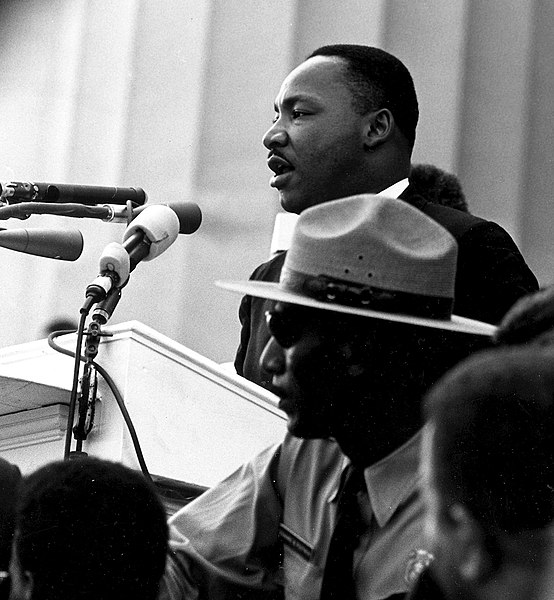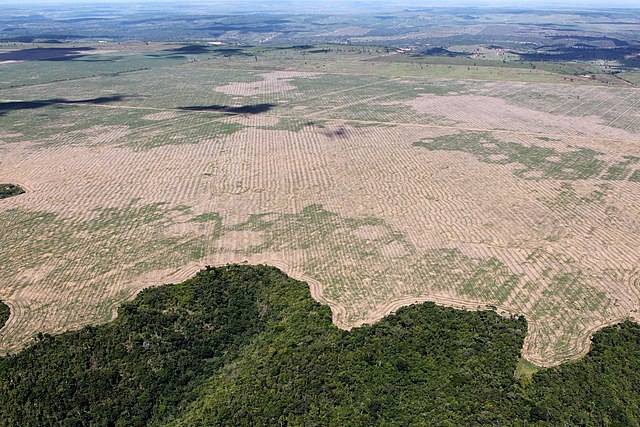The 20th century began on 1 January 1901 (MCMI), and ended on 31 December 2000 (MM). It was the 10th and last century of the 2nd millennium and was marked by new models of scientific understanding, unprecedented scopes of warfare, new modes of communication that would operate at nearly instant speeds, and new forms of art and entertainment. Population growth was also unprecedented, as the century started with around 1.6 billion people, and ended with around 6.2 billion.
Earthrise, taken on 24 December 1968 by astronaut William "Bill" Anders during the Apollo 8 space mission. It was the first photograph taken of Earth from lunar orbit.
The mushroom cloud of the detonation of Little Boy, the first nuclear attack in history, on 6 August 1945 over Hiroshima, igniting the nuclear age with the international security dominating thread of mutual assured destruction in the latter half of the 20th century.
Martin Luther King Jr., an African American civil rights movement leader (Washington, August 1963)
The Blue Marble, Earth as seen from Apollo 17 in December 1972. The photograph was taken by LMP Harrison Schmitt. The second half of the 20th century saw humanity's first space exploration.
The Holocene extinction, or Anthropocene extinction, is the ongoing extinction event caused by humans during the Holocene epoch. These extinctions span numerous families of plants and animals, including mammals, birds, reptiles, amphibians, fish, and invertebrates, and affecting not just terrestrial species but also large sectors of marine life. With widespread degradation of biodiversity hotspots, such as coral reefs and rainforests, as well as other areas, the vast majority of these extinctions are thought to be undocumented, as the species are undiscovered at the time of their extinction, which goes unrecorded. The current rate of extinction of species is estimated at 100 to 1,000 times higher than natural background extinction rates and is increasing. During the past 100–200 years, biodiversity loss and species extinction have accelerated, to the point that most conservation biologists now believe that human activity has either produced a period of mass extinction, or is on the cusp of doing so. As such, after the "Big Five" mass extinctions, the Holocene extinction event has also been referred to as the sixth mass extinction or sixth extinction; given the recent recognition of the Capitanian mass extinction, the term seventh mass extinction has also been proposed for the Holocene extinction event.

The dodo became extinct during the mid-to-late 17th century due to habitat destruction, overhunting, and predation by introduced mammals. It is an often-cited example of a modern extinction.
The moa went extinct in New Zealand in the 1400s due to overhunting. Prior to the arrival of the Maori a hundred years earlier, New Zealand was uninhabited by humans.
A diagram showing the ecological processes of coral reefs before and during the Anthropocene
Deforestation in the Maranhão state, Brazil, in July 2016








